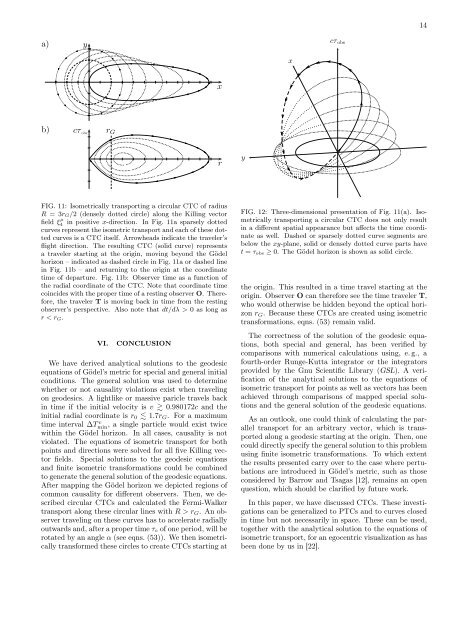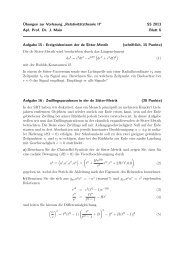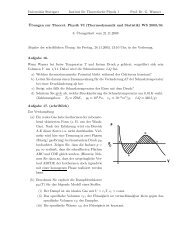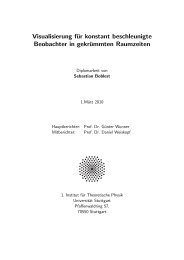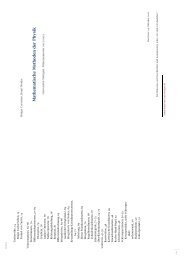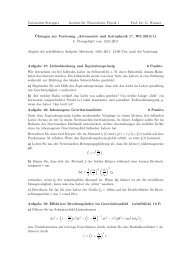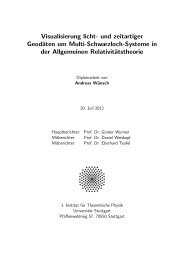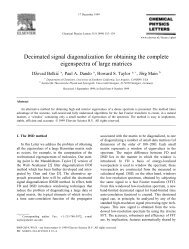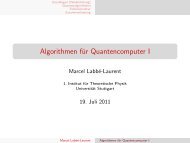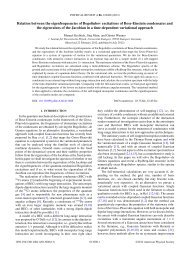The Gödel universe - Institut für Theoretische Physik der Universität ...
The Gödel universe - Institut für Theoretische Physik der Universität ...
The Gödel universe - Institut für Theoretische Physik der Universität ...
You also want an ePaper? Increase the reach of your titles
YUMPU automatically turns print PDFs into web optimized ePapers that Google loves.
a) y <br />
b)<br />
<br />
<br />
<br />
<br />
<br />
<br />
<br />
<br />
<br />
<br />
<br />
<br />
<br />
<br />
<br />
<br />
<br />
<br />
<br />
<br />
<br />
<br />
<br />
<br />
<br />
<br />
<br />
<br />
<br />
<br />
<br />
<br />
<br />
<br />
<br />
<br />
<br />
<br />
<br />
<br />
<br />
<br />
<br />
<br />
<br />
<br />
<br />
<br />
<br />
<br />
<br />
<br />
<br />
<br />
<br />
<br />
<br />
<br />
<br />
<br />
<br />
<br />
<br />
<br />
<br />
<br />
<br />
<br />
<br />
<br />
<br />
<br />
<br />
<br />
<br />
<br />
<br />
<br />
<br />
<br />
<br />
<br />
<br />
<br />
<br />
<br />
<br />
<br />
<br />
<br />
<br />
<br />
<br />
<br />
<br />
<br />
<br />
<br />
<br />
<br />
<br />
<br />
<br />
<br />
<br />
<br />
<br />
<br />
<br />
<br />
<br />
<br />
<br />
<br />
<br />
<br />
<br />
<br />
<br />
<br />
<br />
<br />
<br />
<br />
<br />
<br />
<br />
<br />
<br />
<br />
<br />
<br />
<br />
<br />
<br />
<br />
<br />
<br />
<br />
<br />
<br />
<br />
<br />
<br />
<br />
<br />
<br />
<br />
<br />
<br />
<br />
<br />
<br />
<br />
<br />
<br />
<br />
<br />
<br />
<br />
<br />
<br />
<br />
<br />
<br />
<br />
<br />
<br />
<br />
<br />
<br />
<br />
<br />
<br />
<br />
<br />
<br />
<br />
<br />
<br />
<br />
<br />
<br />
<br />
<br />
<br />
<br />
<br />
<br />
<br />
<br />
<br />
<br />
<br />
<br />
<br />
cτ obs<br />
rG<br />
FIG. 11: Isometrically transporting a circular CTC of radius<br />
R = 3rG/2 (densely dotted circle) along the Killing vector<br />
field ξ µ<br />
4 in positive x-direction. In Fig. 11a sparsely dotted<br />
curves represent the isometric transport and each of these dotted<br />
curves is a CTC itself. Arrowheads indicate the traveler’s<br />
flight direction. <strong>The</strong> resulting CTC (solid curve) represents<br />
a traveler starting at the origin, moving beyond the <strong>Gödel</strong><br />
horizon – indicated as dashed circle in Fig. 11a or dashed line<br />
in Fig. 11b – and returning to the origin at the coordinate<br />
time of departure. Fig. 11b: Observer time as a function of<br />
the radial coordinate of the CTC. Note that coordinate time<br />
coincides with the proper time of a resting observer O. <strong>The</strong>refore,<br />
the traveler T is moving back in time from the resting<br />
observer’s perspective. Also note that dt/dλ > 0 as long as<br />
r < rG.<br />
VI. CONCLUSION<br />
We have <strong>der</strong>ived analytical solutions to the geodesic<br />
equations of <strong>Gödel</strong>’s metric for special and general initial<br />
conditions. <strong>The</strong> general solution was used to determine<br />
whether or not causality violations exist when traveling<br />
on geodesics. A lightlike or massive paricle travels back<br />
in time if the initial velocity is v 0.980172c and the<br />
initial radial coordinate is r0 1.7rG. For a maximum<br />
time interval ∆T v min<br />
, a single particle would exist twice<br />
within the <strong>Gödel</strong> horizon. In all cases, causality is not<br />
violated. <strong>The</strong> equations of isometric transport for both<br />
points and directions were solved for all five Killing vector<br />
fields. Special solutions to the geodesic equations<br />
and finite isometric transformations could be combined<br />
to generate the general solution of the geodesic equations.<br />
After mapping the <strong>Gödel</strong> horizon we depicted regions of<br />
common causality for different observers. <strong>The</strong>n, we described<br />
circular CTCs and calculated the Fermi-Walker<br />
transport along these circular lines with R > rG. An observer<br />
traveling on these curves has to accelerate radially<br />
outwards and, after a proper time τ◦ of one period, will be<br />
rotated by an angle α (see eqns. (53)). We then isometrically<br />
transformed these circles to create CTCs starting at<br />
x<br />
r<br />
y<br />
x<br />
cτ obs<br />
14<br />
FIG. 12: Three-dimensional presentation of Fig. 11(a). Isometrically<br />
transporting a circular CTC does not only result<br />
in a different spatial appearance but affects the time coordinate<br />
as well. Dashed or sparsely dotted curve segments are<br />
below the xy-plane, solid or densely dotted curve parts have<br />
t = τobs ≥ 0. <strong>The</strong> <strong>Gödel</strong> horizon is shown as solid circle.<br />
the origin. This resulted in a time travel starting at the<br />
origin. Observer O can therefore see the time traveler T,<br />
who would otherwise be hidden beyond the optical horizon<br />
rG. Because these CTCs are created using isometric<br />
transformations, eqns. (53) remain valid.<br />
<strong>The</strong> correctness of the solution of the geodesic equations,<br />
both special and general, has been verified by<br />
comparisons with numerical calculations using, e.g., a<br />
fourth-or<strong>der</strong> Runge-Kutta integrator or the integrators<br />
provided by the Gnu Scientific Library (GSL). A verification<br />
of the analytical solutions to the equations of<br />
isometric transport for points as well as vectors has been<br />
achieved through comparisons of mapped special solutions<br />
and the general solution of the geodesic equations.<br />
As an outlook, one could think of calculating the parallel<br />
transport for an arbitrary vector, which is transported<br />
along a geodesic starting at the origin. <strong>The</strong>n, one<br />
could directly specify the general solution to this problem<br />
using finite isometric transformations. To which extent<br />
the results presented carry over to the case where pertubations<br />
are introduced in <strong>Gödel</strong>’s metric, such as those<br />
consi<strong>der</strong>ed by Barrow and Tsagas [12], remains an open<br />
question, which should be clarified by future work.<br />
In this paper, we have discussed CTCs. <strong>The</strong>se investigations<br />
can be generalized to PTCs and to curves closed<br />
in time but not necessarily in space. <strong>The</strong>se can be used,<br />
together with the analytical solution to the equations of<br />
isometric transport, for an egocentric visualization as has<br />
been done by us in [22].


